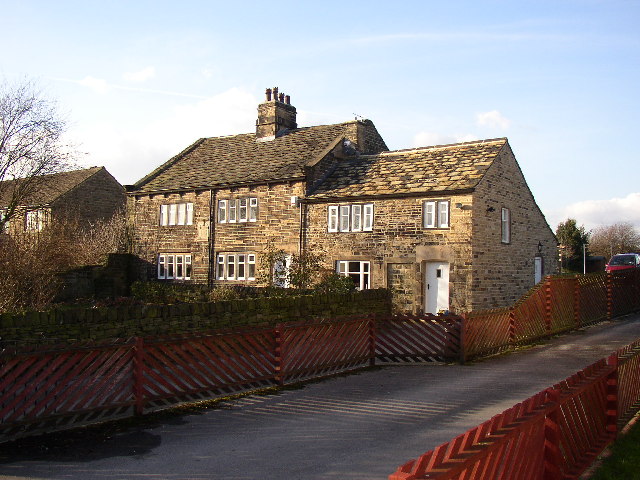After William Ramsden bought the Manor of Huddersfield in 1599, the region grew from a small village into an industrial town. This was marked in 1671, when the Ramsdens were granted a Market Charter, allowing them to hold a market in Huddersfield each Tuesday.
Before the Industrial Revolution, Kirklees was made up of countryside, farmland, and small villages. The land was quite hilly, which made growing crops difficult, but ideal for grazing sheep. With plenty of sheep, fast-flowing streams, and natural resources, many people made a living by farming and turning wool into cloth.
For many years, families worked together at home to spin wool and weave fabric. This was known as home or cottage industry. The cloth they made was either used to make clothes for their own families or sold at local markets to earn money. Most people lived in small weavers’ cottages, often with just one or two rooms.
Families worked, cooked, and slept in the same space. There were no taps or toilets inside the house – water had to be collected from a nearby stream or well, and people used outdoor toilets called privies.
“[There are] scattered an infinite number of cottages or small dwellings which dwell the workmen which are employed, the women and children of whom, are always busy carding, spinning etc. so that no hands being unemploy’d, all can gain their bread even from the youngest to the ancient; hardly anything above four years old, but its hands are sufficient to it self” From A Tour Through the Whole Island of Great Britain (1724 – 1726) by Defoe, D.
Besides making cloth, the clothiers ran farms to feed themselves and their families. This system of growing crops for food and making cloth for income was typical of the area from the 16th to the 18th centuries. It is often called the ‘dual economy’.
One example of this is the town of Mirfield, which became an important place for making woollen cloth. This was because there were lots of sheep in the area and streams that helped clean the wool. After the wool was washed, it was carried by packhorses to local cottages. There, villagers would spin the wool into thread or weave it into fabric using handlooms. This was then collected and taken to skilled workers who turned it into cloth ready to be sold.
There were no cars, trains, or buses. People usually walked everywhere, and if they needed to carry goods or travel long distances, they used horses or carts. Some wool traders used packhorses to move wool between villages and markets.
Roads were often muddy and rough, especially in winter. It could take a whole day to travel just a few miles. This is is why people mostly stayed close to their villages and relied on local markets and neighbours for supplies and support.
